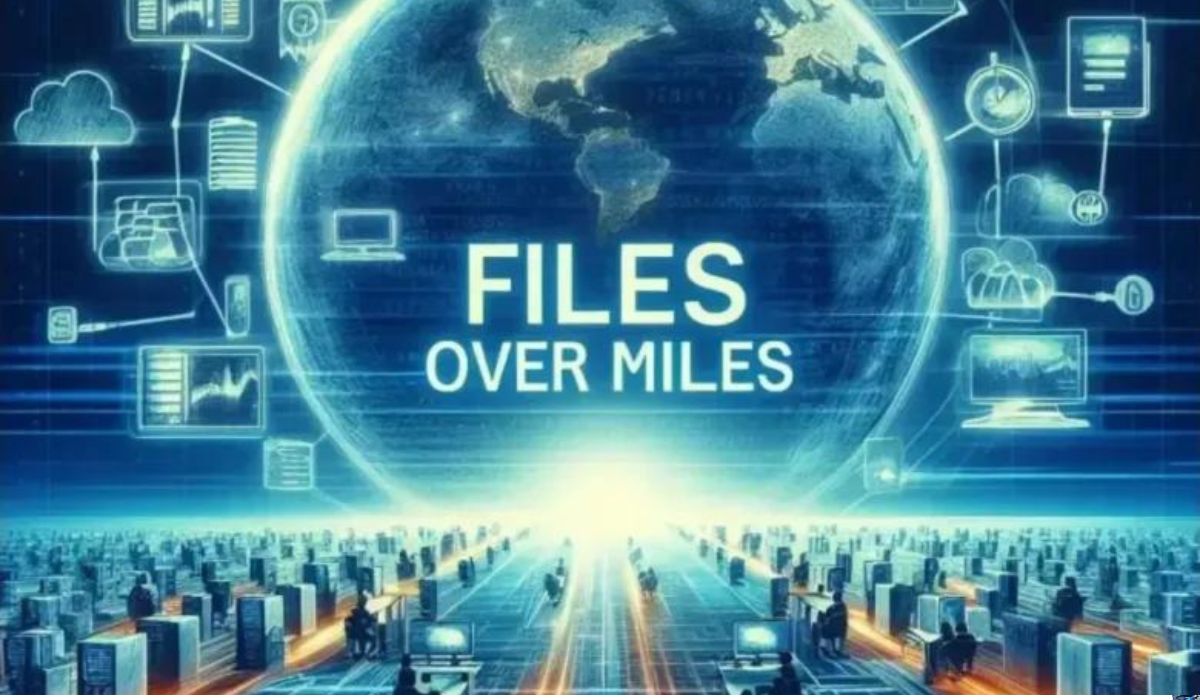Introduction
In today’s world, technology is everywhere. One term you might hear often is “Files Over Miles.” But what does it mean? It’s all about how technology allows us to share and manage files without needing to be in the same place. This has a big impact on how we work, learn, and stay connected. Let’s explore what “Files Over Miles” is all about and how it affects our daily lives.
What Does “Files Over Miles” Mean?
The phrase “Files Over Miles” refers to the ability to send and access digital files from anywhere in the world. Instead of having to physically move documents from one place to another, technology allows us to share information instantly over the internet. This means you can send a report or a photo to someone on the other side of the globe just as easily as if they were in the next room.
The Rise of Digital Files
Before the internet, people used physical documents, like papers and files, which had to be transported from place to place. This could be slow and costly. With the rise of digital technology, we can now create, store, and share files electronically. Digital files are stored on computers or in the cloud, which is a special kind of online storage. This makes it much easier and faster to share information.
Benefits of Digital Files
Digital files offer many advantages. Here are a few key benefits:
1. Instant Access
With digital files, you don’t have to wait for documents to be delivered. You can access them instantly from anywhere with an internet connection. This is especially useful for students and professionals who need quick access to important information.
2. Easy Sharing
Sharing digital files is quick and easy. You can send files through email, cloud services, or file-sharing apps. This means you can collaborate with others even if you’re not in the same location.
3. Reduced Clutter
Physical documents can take up a lot of space and create clutter. Digital files are stored on devices or in the cloud, which helps keep your workspace tidy and organized.
4. Better Security
Digital files can be protected with passwords and encryption, making them safer from unauthorized access. This is important for keeping sensitive information secure.
The Impact of Remote Work
One major way “Files Over Miles” has changed our lives is through remote work. Remote work means that people can do their jobs from anywhere, not just from an office. This is possible because digital files and online tools allow people to work together without being in the same place.
1. Flexibility
Remote work offers a lot of flexibility. People can work from home, coffee shops, or even while traveling. This flexibility can lead to a better work-life balance and increased productivity.
2. Global Collaboration
With digital files, teams can collaborate from different parts of the world. This opens up new opportunities for businesses to work with talented people no matter where they live.
3. Cost Savings
Remote work can save money on office space, commuting, and other expenses. This can be beneficial for both employers and employees.
Tools for Managing Digital Files

To make the most of “Files Over Miles,” there are several tools that help manage and organize digital files. Here are some popular tools and services:
1. Cloud Storage
Services like Google Drive, Dropbox, and OneDrive offer cloud storage. This means you can store files online and access them from any device. Cloud storage is also great for sharing files with others.
2. File-Sharing Apps
Apps like WeTransfer and SendAnywhere make it easy to send large files quickly. These apps are useful when you need to share big documents or multimedia files.
3. Project Management Tools
Tools like Trello, Asana, and Slack help teams manage projects and collaborate online. They allow team members to share files, track progress, and communicate effectively.
The Future of Digital Files
As technology continues to advance, the way we handle digital files will keep evolving. Here are some future trends to watch for:
1. Artificial Intelligence (AI)
AI could make managing digital files even easier. For example, AI could help automatically sort and organize files or suggest relevant documents based on what you’re working on.
2. Increased Cloud Integration
More services and applications will likely integrate with cloud storage. This means files will be even more accessible and easier to share across different platforms.
3. Improved Security
As digital files become more important, security will be a top priority. Expect advancements in encryption and other security measures to protect your information.
Everyday Examples of “Files Over Miles”
Here are a few everyday examples of how “Files Over Miles” works in real life:
1. Sending School Assignments
Students can submit homework and projects online instead of handing in physical papers. This makes it easier for teachers to review and grade assignments.
2. Sharing Family Photos
Families can share photos with relatives who live far away. Digital files make it easy to stay connected and share special moments, no matter the distance.
3. Collaborating on Work Projects
Teams working on projects can share documents and updates in real-time. This helps everyone stay on the same page and work together more effectively.
Conclusion
The concept of “Files Over Miles” highlights how technology has transformed the way we handle and share information. Digital files have made it easier to work, learn, and stay connected from anywhere in the world. With tools like cloud storage and file-sharing apps, managing digital files is more efficient and secure. As technology continues to advance, we can expect even more innovations that make “Files Over Miles” an even bigger part of our lives. Embracing these changes can help us stay connected and productive in an increasingly digital world.
Most Related Search FAQs
What does “Files Over Miles” mean?
“Files Over Miles” refers to the ability to share and access digital files from anywhere in the world using technology, eliminating the need for physical document transportation.
How has digital technology changed file sharing?
Digital technology has made file sharing instantaneous and easy, allowing files to be sent and accessed online rather than being physically transported.
What are the benefits of using digital files?
Digital files offer instant access, easy sharing, reduced clutter, and improved security compared to physical documents.
How does remote work relate to “Files Over Miles”?
Remote work relies on the ability to share and access files digitally, enabling people to work from anywhere without needing to be in the same physical location as their colleagues.
What are some popular tools for managing digital files?
Popular tools include cloud storage services like Google Drive and Dropbox, file-sharing apps like WeTransfer, and project management tools like Trello and Slack.









































